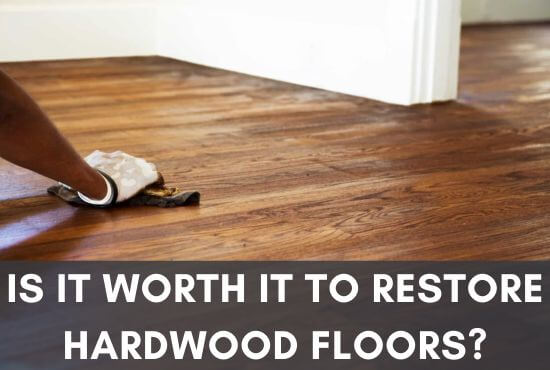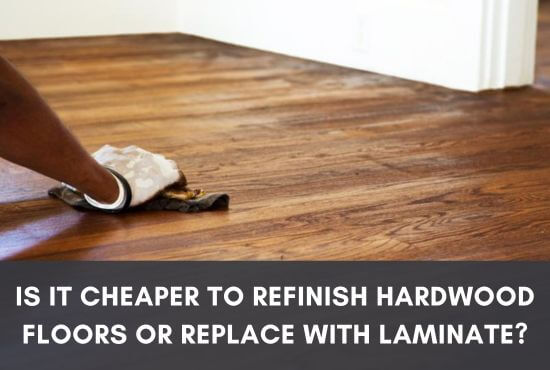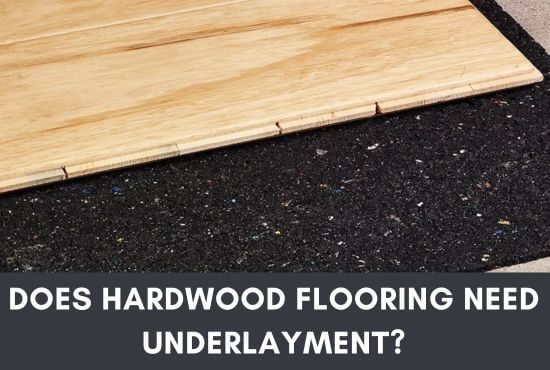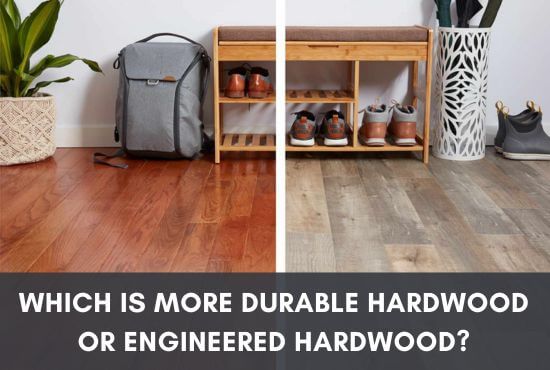Hardwood floors are an exquisite feature of one’s home interior; protecting them is the homeowner’s responsibility.
While there are many measures one can take, sealing the hardwood floors is one of the most common methods of offering protection and quality retention to hardwood floors.
However, many people have recently started the debate of whether hardwood floors need to be sealed in this modern era or not.
Hardwood floors should be sealed for protection against wear, moisture damage, and decay, especially if they are made from porous wood. Prefinished planks may not require sealing, but it can provide added safeguards.

However, many factors are involved in this situation that needs to be kept in mind, such as the situation of engineered floors and the right type of sealant according to the wood.
But rest assured, all of these and a sealing guide are detailed below, so make sure you pay attention to every word.
Table of Contents
- 1 What Is A Hardwood Floor Seal?
- 2 Which Floors Should Be Sealed?
- 3 Do Hardwood Floors Need To Be Sealed?
- 4 Do You Need To Seal Engineered Wood Flooring?
- 5 How To Seal Hardwood Floors | Step-By-Step Guide
- 6 What Happens If You Don’t Seal Wood Floors?
- 7 How Often Should Hardwood Floors Be Sealed?
- 8 How Do I Know If My Hardwood Floors Are Sealed?
- 9 What Is The Difference Between Sealed And Non-Sealed Hardwood Floor?
- 10 Final Thoughts
What Is A Hardwood Floor Seal?
A sealant is a protective substance applied on the wood’s surface to form a protective coating that prevents damage to the wooden surface beneath it.
Although seals are also used for other floorings, we will discuss only hardwood floors.
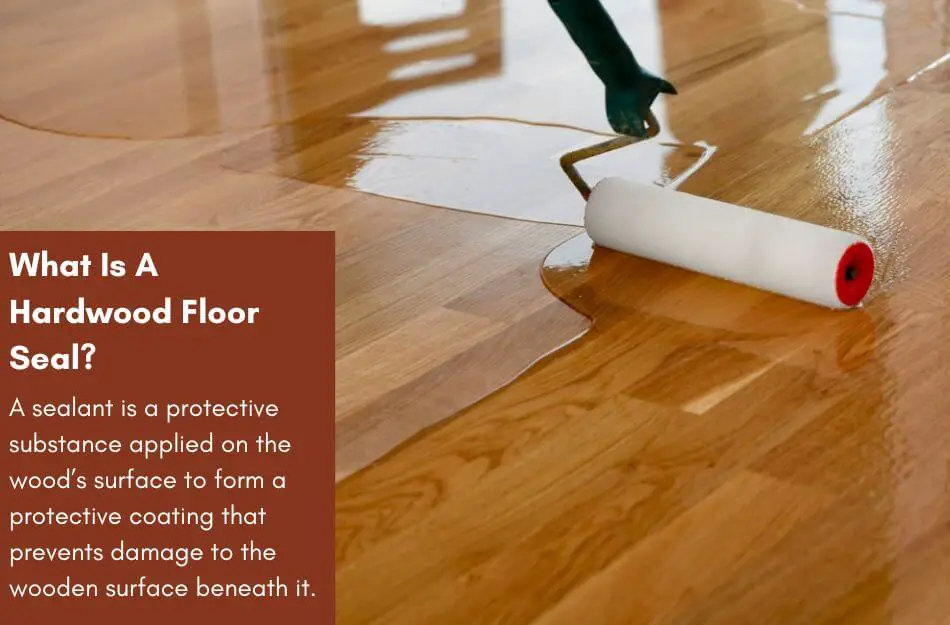
Sealers are made of various types of chemicals which seep into the wood’s surface and cover its pores.
The button part of the seal is attached to the wood’s surface, while a thick coat on the top rests as a shield to protect the wood’s grain.
Sealers offer protection from various types of damage, for instance, stains and spillages. In normal scenarios, if you accidentally drop a liquid on the floor, it would get absorbed into the wood’s surface and might cause damage.
However, a seal prevents this from happening as it covers the surface from the top, and due to its non-porous surface, the liquid can’t seep through and damage the wooden flooring underneath.
Moreover, a sealant will also protect the floors from scratches and minor dents. If you have pets or children in the house, you might experience scratches on the floors because of the pet’s paws or the children’s toys.
However, the protective layer keeps the wooden surface safe from getting scratched.
Similarly, dropping something a little bit heavy could’ve caused the floor to dent, but as the seal takes most of the pressure and disperses it across the surface, your hardwood floors remain intact in this situation.
Many types of sealers are available in the market, depending on what you prefer and the condition of your floors. Besides, it is noteworthy that finishes and sealers are different products and should not be mixed up.
While finishes only sit on the floor, sealants grip the wood’s surface and allow better adhesion.
Besides, some types of finishes are applied to the wood immediately after installation because the wood is vulnerable and needs protection ASAP.
However, other restorative sealants are meant to cure and restore damaged wooden boards.
Which Floors Should Be Sealed?
Sealants can seal hardwood floors, natural stone, and tiles for optimum protection. The sealant layer will provide optimum protection to these surfaces and allow them to maintain their pristine condition for an extended time.
However, many people often need clarification and tend to seal all types of surfaces. Ensure you don’t repeat this mistake, which can prevent some floors from breathing.
If you are unsure whether you should seal the type of surface you have in your house, you must contact the manufacturer or check for instructions in the packaging (if any). Anyway, here is a list of the surfaces which can be sealed.
Hardwood
Hardwood floors are one of the most popular flooring types, considered a luxury and often seen as exquisite.
They are quite expensive depending on the type of wood used, and prone to rot and decay. Hence, caring for them becomes inevitable if you want them to sustain their rich appearance.
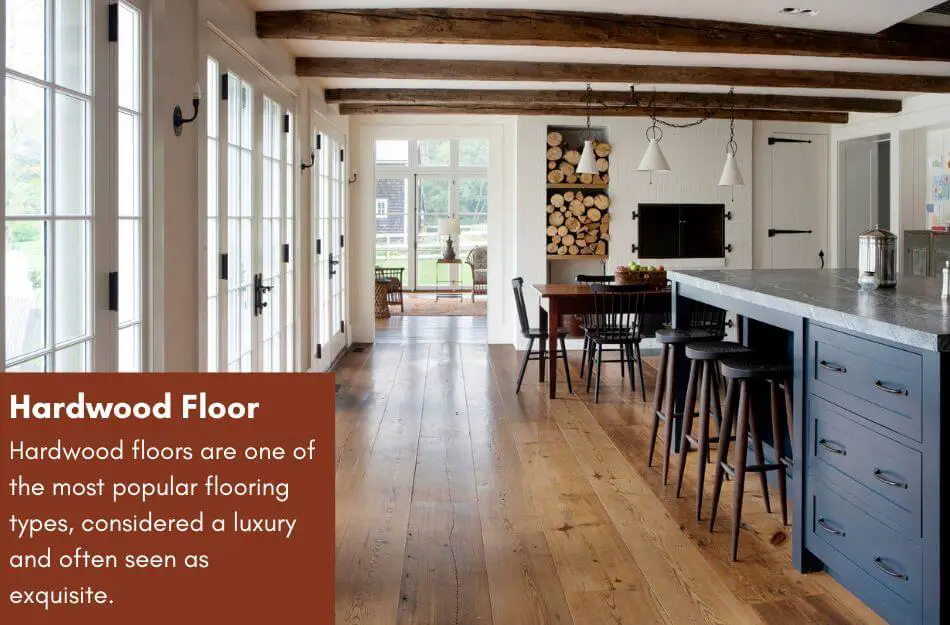
A simple coat can fill the wooden pores and close all possible ways for moisture or other unwanted substances to enter the wooden surface.
Besides, it also acts as an adhesion method as the entire layer of sealant sticks to the surface of the hardwood floors.
This causes them to be held together and prevents individual movement of the floors.
Moreover, a seal will also work well with stains and finishes to make your hardwood floors look luscious and to keep them as safe as possible.
Depending on the type of wood used on your floors, you might need to seal your floors immediately to prevent them from any possible damage.
Natural Stone
While many believe that the stone is very resilient and robust, and due to its strength, it does not need a seal, reality begs to differ. Stones are very porous and prone to erosion and water and moisture damage.
Natural stone can get eroded by the actions of wind and water; the same is true of stones in your floorings or any other surface.
Hence, it is suitable to seal your natural stones to preserve their natural appearance and protect them from wear and tear.
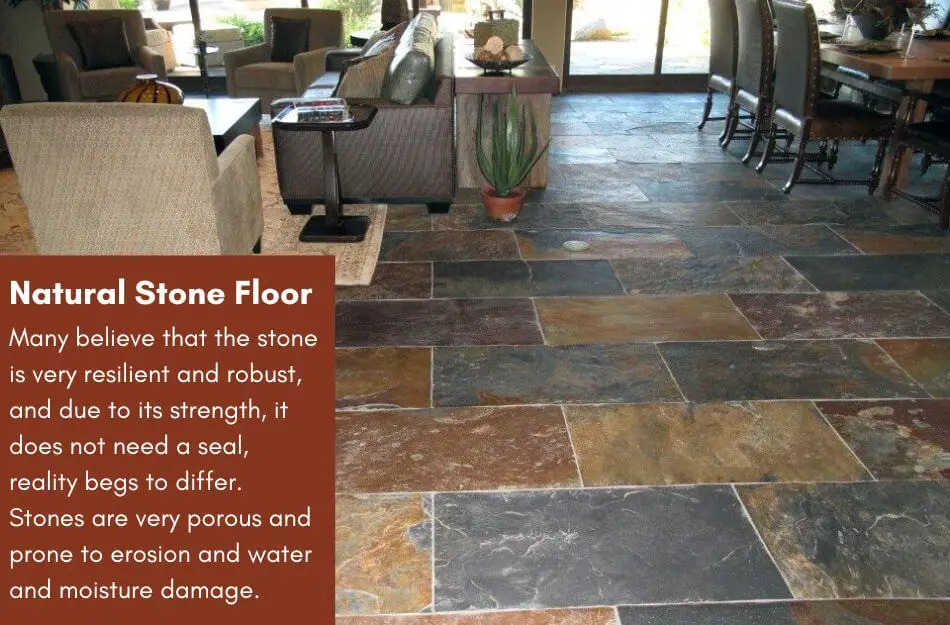
Besides, if the stones are placed in floorings, they will surely receive loads of traffic; hence, the grit from the shoes and the pressure can cause them to erode or even get cracked at some point.
Therefore, it is best to protect your floorings through an effective sealant according to your manufacturer’s recommendations.
Tile
Tiled floors are often considered unsuitable for sealing due to their slippery surface. Many homeowners believe the surface is not porous and hence cannot be gripped by a sealant.
However, this is not true, as special tile sealants protect the surface from external dangers and form a considerable level of grip on the floors.

Sealing tiles can yield many benefits to the homeowner; for instance, it can prevent stains and scratches, which might degrade the value and appearance of your hardwood floors.
Moreover, sealing the tiles can also ensure their longevity as it can protect the grout from erosion for wear and tear factors. However, make sure that you check if the tile is pre-sealed or not.
Consulting a professional or the manufacturer is extremely important to figure out the right time to seal tiled floors when ready; sometimes, the floors might need sealing as soon as they are installed.
Do Hardwood Floors Need To Be Sealed?
If your hardwood floors are not sealed from the manufacturing point, they must be sealed once installed.
Although the right time for sealing can differ from wood to wood, all unsealed wood must be sealed under any circumstances. The difference in time before sealing comes from a few factors.
Firstly, the wood needs time for acclimation, which means it will adjust to the atmosphere’s moisture content and match it inside the surface of the planks.

Once that is done, you can seal your hardwood floors. Moreover, if acclimation was allowed before installation, you must check if the wood has been treated with chemicals or any treatments.
This might require time for the chemicals to adjust before applying the sealant.
Once these factors are taken care of, you can seal your hardwood floors using the product or type of sealant you prefer.
If you combine it with a stain and a finish, not only will it improve the appearance of your hardwood floors, but it will also make them safe.
As the wood takes pressure and damage daily, not applying a sealant will only put the wooden surface at risk and decrease its longevity significantly.
Besides, unsealed wood is more prone to rotting and decaying, even if it is not as damaged as expected.
However, a sealant can protect the surface and prevent it from happening, increasing the life of your hardwood floors by many years.
Do You Need To Seal Engineered Wood Flooring?
If the engineered wood has a porous surface on the top and is not sealed beforehand, you must seal it separately to provide the optimum protection it needs.
Engineered wood is a synthetic material that combines wood and other composite materials such as PVC and plastic. Besides, it has a veneer layer on top of it which forms a coating for the hardwood surface underneath.
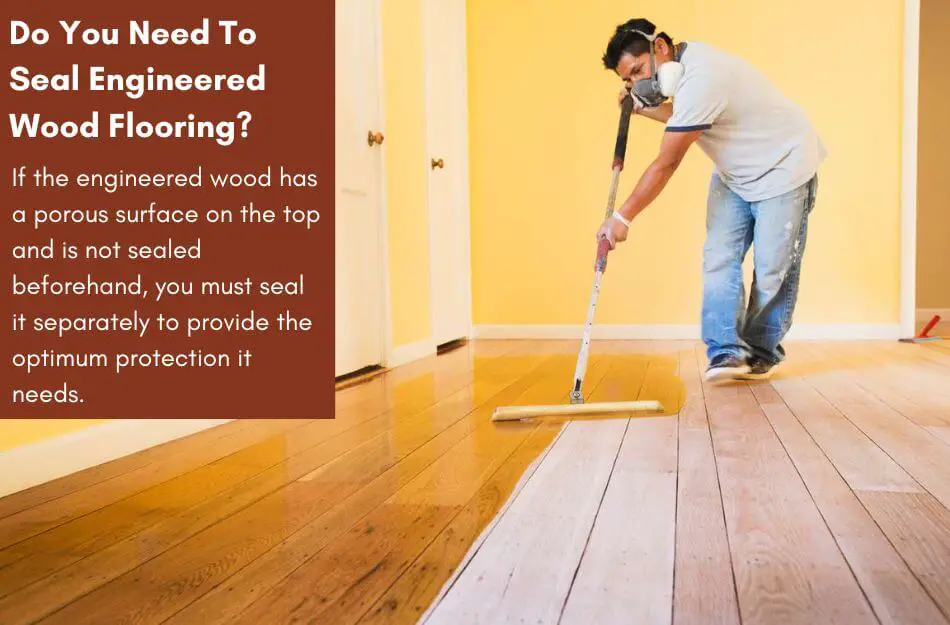
If the veneer coating is present and is not porous, you will not have to get any hardwood sealant on the floors.
However, if the coating is absent or porous, it is highly recommended that you get your engineered hardwood floors sealed as soon as possible.
In usual cases, the top coat in engineered hardwood is at least 2x stronger than the wood itself. This saves it from the dangers of water, abrasion, and grit.
Hence, a coating of sealant becomes unnecessary. However, many homeowners still tend to get engineered hardwood floors sealed for even more protection.
But this is unnecessary as the coat itself can give your floors a longer lifetime and protection from all the factors that might concern you regarding the safety of your hardwood floors.
If you still want to coat your hardwood floors with sealant despite being coated already, you should consult a professional even though it won’t harm you.
Furthermore, engineered wood is mostly treated with chemicals to make it resistant to decay and rot; hence, if your engineered hardwood floors are not sealed or coated and feature a porous surface, you must consult a professional.
Make sure you seal the floors only after the recommended time has passed for the wood to acclimate and the chemicals to settle.
How To Seal Hardwood Floors | Step-By-Step Guide
The right way to seal hardwood floors is to sand them down first, apply a suitable stain, and then seal them. While many homeowners want to skip the sanding process, it is extremely important.
Cleaning the floors or exposure to moisture in any form can cause the wooden fibers to stand. This can be a nuisance while applying the sealant on your hardwood floors.
Moreover, the wood fibers get trapped in the sealant surface, and when it is time to remove the seal to refinish the floors after a few years, the fibers can get stripped off, causing damage to the wooden surface.
Besides, as this damage is inflicted directly upon the surface of the wood, it is permanent and irreversible; although you can stain the area to fill it up and make it appear less prominent, it would still exist in the wood’s grain.
Hence, sanding can smooth the surface and even out the wood’s grain for the best application of stain and sealant.
Staining is yet another important process before you seal your hardwood floors after sanding them down.
While sanding grinds down the wood surface to make the texture smoother, the stain gives the right color to your hardwood floors and allows you to customize the floors according to your liking.
In addition, stains also provide the necessary moisture to the wood to prevent it from looking dry and rough and keep it shining while maintaining the wet appearance (if given).
It also fills up small scratches and dents and hides them under the color to ensure that the look of your floors is not affected or downgraded.
Below is a complete guide on sealing hardwood floors from the most basic elements.
Clear The Floors For Sanding
Sanding down dirty floors is not recommended; cleaning hardwood floors before they can be sanded is only wise.
Although many hand-held sanders are powerful enough to cut through dirt and grime, it is not recommended that you do so.
This may create unevenness in the wood grain as the layer might be thick in some places and thin in others.
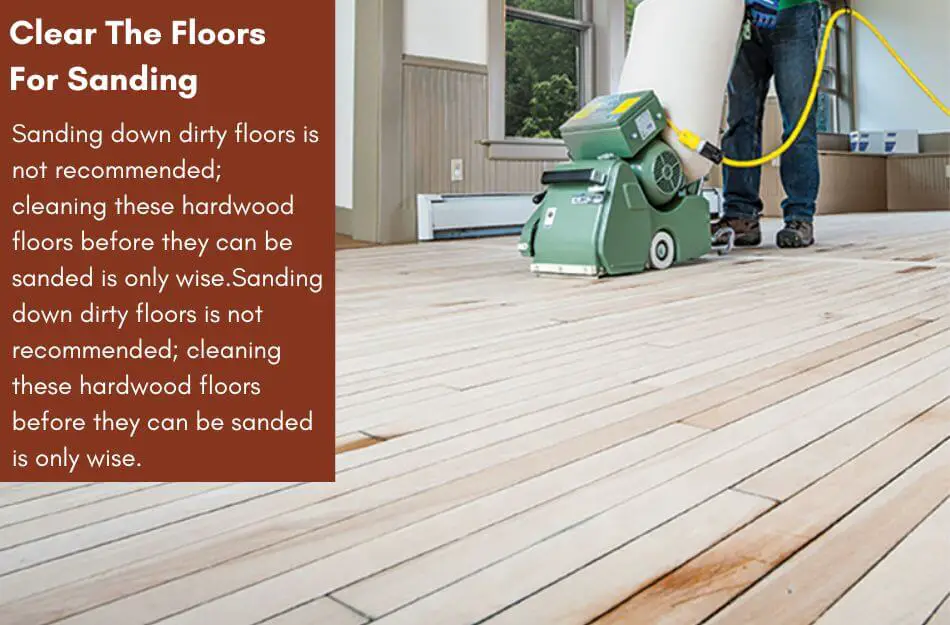
Hence, it is best to clean the floors with a wood cleaner and scrub the surface so the raw wood or the varnish is exposed, and then you can proceed towards sanding.
Furthermore, as much sawdust will be in the air, ensure to ventilate the room properly by opening doors and windows. This will prevent fresh air from flowing in, and the sawdust will not settle on the floors.
Besides, it will also help you during the process, as breathing in an enclosed room during a sanding session can be quite difficult.
Another step you must take is to look for nails or screws that might have lifted or are close to coming off.
It is best to drive them in with a hammer or a screwdriver to prevent any accidents during the sanding process.
Once you are done with all these procedures, take a final look to check if you’ve missed anything, and if not, you can move towards sanding down your hardwood floors.
Sand Down Hardwood Floors
Now that the surface is cleaned enough, you can make the wood’s grain fine enough to be stained and sealed.
Most of the time, there is a buildup on top of hardwood floors over time which can hide the wood’s grain or meddle with the texture.
However, sanding the surface with a recommended gritter or sandpaper can allow you to bring back the original texture of the wood.
Slow and soft sanding with a gritter or sandpaper that is not too harsh for the surface will be good enough.
It is best to start from the farthest end of the room and move your way toward the door.
Moreover, it is also recommended to work your way along the wood grain for the best results and a better appearance. You can use a drum sander if the floors are too big or if you want the task done quickly.
Otherwise, you can also use hand-held sanders to sand down the hardwood floors by hand for further detail and accuracy.
In addition, once you’ve sanded down your old hardwood floors, dry mop them once to get rid of all the wood shavings and sawdust before you can proceed to the next step. Do check out how to sand hardwood floors by hand.
Cleaning & Drying
Cleaning the hardwood floors after they have been sanded down is extremely important. While you might have performed a general cleaning routine immediately after the sanding session to remove the sawdust and shavings, it is crucial to clean the floors deep too.
This can prevent further clogging on the pores of your hardwood floors and ensure that no dirt or sawdust is present on the surface, which might be troublesome later on.
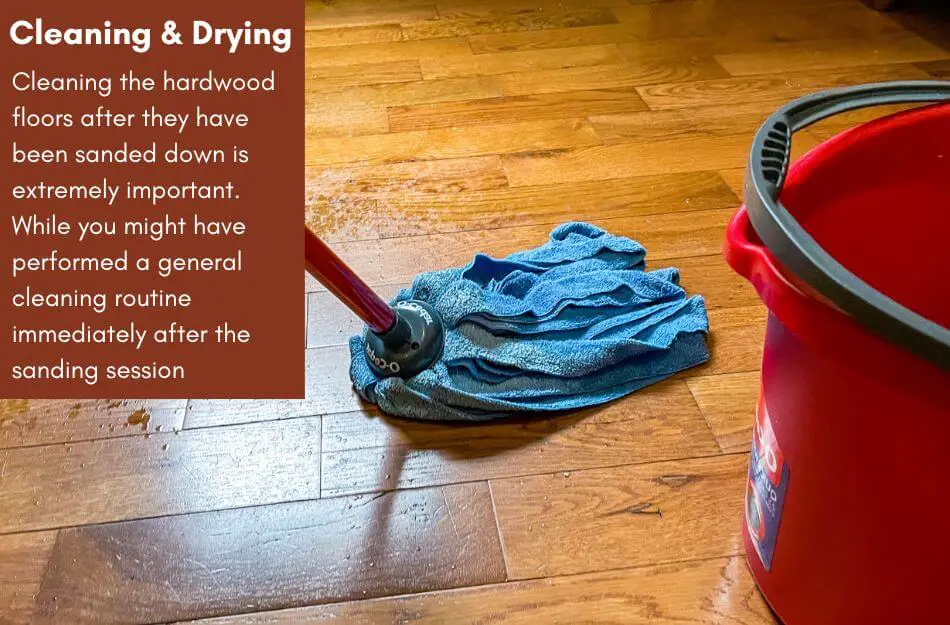
You can use various cleaners according to your wood type and grain but also keep in mind if your wood is porous or non-porous.
Some suitable options are Bona, Lysol, and Pine-Sol cleaners which can easily perk up the original look of your hardwood floors.
Once you finish the cleaning phase, it is time to dry the surface, as you don’t want any moisture to be locked in under your sealant.
Besides, excessive moisture can seep in, damage your hardwood boards, and destroy your subflooring structure. Moreover, the moisture can cause the floors to bounce.
Staining
Once the hardwood floors have been sanded down, it is time to stain them. Staining has many benefits, as mentioned earlier.
It can give your hardwood floors a lighter or darker color and hide minor dents and scratches to make the surface appear spotless and smooth.
However, it is necessary to identify whether your hardwood floors need staining and what type of stains should be applied.

In cases where unique hardwood is installed in the house, such as mahogany floor, maple floor, cherry, and walnut floors, such woods should not be stained.
These exotic types of wood are not to be stained due to their original appearance. These types of woods are usually high-priced, so they look beautiful in their natural state, and tempering with that is not recommended.
Moreover, the real purpose of staining wood is to imitate the appearance of these wood types. Therefore, it is not suitable to stain such wood types.
However, if you want to stain to hide scratches or dents, you can either spot-stain them or give the affected area a very light coating. It is preferred that a professional should do it.
On the contrary, if you have more common hardwood floorings installed in your house, you can stain them without any worries.
For instance, white or red oak is one of the best receivers of stain as they absorb it very well and give you the desired look almost immediately.
The natural appearance of these woods could be better, so they are placed in a mid-range price segment and are affordable for many people. These types of woods can be stained without hesitation and regardless of the chosen color.
But it is best to consult the manufacturer for this purpose and for an expert opinion on what will suit the type of wood you have installed.
Seal The Hardwood Floors
Now that the stain has been applied, it is now time that the sealant should be applied on the floors. The sealant will lock the stain under its layer and keep it stable on the wood’ surface while preventing it from evaporating or getting worn out.
Besides, this will also promote the luscious appearance of hardwood floors and allow them to be retained for longer. Sealing your hardwood floors after they have received the right treatment is important.
This will lock in the necessary moisture and protect your hardwood floors from damaging factors. There are various materials that you can seal your hardwood floors with.
The purpose of these protective sealants is to prevent the floors from getting too moist or too dry. Moreover, they also protect the floors from scratches, scuff marks, dents, and spillages.
It is important to notice that the surface is dry and that the cleaning solutions or polishes have dried off before applying any sealants.
Apply your preferred product according to the instructions given by the manufacturer and let the sealant dry and harden. Then you can move your furniture on the hardwood floor and easily inhabit the area.
Many homeowners need clarification on whether they should use water- or oil-based finishes and the perks of each one. Rest assured; we have compiled a list of the features of both these sealants to make it easier for you to decide.
Water-Based Sealants
If you are looking for an easier solution to apply a sealant on your hardwood floors, you must go for water-based sealants. They are much thinner in viscosity and can be applied using a brush.
Moreover, they are faster to apply; however, you have to make sure to adopt the right way of sealing with the brush to prevent any lap marks from becoming permanent.
In cases where you have darker or more expensive wood types and do not want to stain them as they can hide their natural grain, you can use these sealants to make them appear much better.
Besides, as they are non-colored, they make the original grain of the wood much more prominent and allow it to be enhanced even further.
Recently, many professionals and flooring specialists have shifted from oil-based to water-based sealants for many reasons. Firstly, as mentioned earlier, it is very easy to apply, which makes the job much easier.
Although it might require more coats, it is surely an easier method. Secondly, it is suitable for exotic wood types, and even if you have stained the wood, this type of seal will only complement the overall look as it is clear. It does not turn yellow or orange-ish hue after some time as many oil-based sealants do.
Lastly, unlike oil-based sealants, it is safe for the environment and your use and does not emit any toxic VOCs.
Besides, this makes it much safer for your pets as they are always at a high risk of getting sick because of it. Although oil-based sealants are also safe once dried, they can be very dangerous at the time of application.
Oil-Based Sealants
Oil-based sealants are renowned for their quality of adding color to the appearance of your hardwood floors.
Many people do not want to stain their floors or can’t spare enough budget to afford to stain as well. Using oil-based sealants is the perfect way for them to add color and depth to the wooden surface.
Besides, based on the type of wood, the oil-based sealants can make the wood grain appear lighter or darker.
For instance, hardwood floors with a naturally lighter color will be shown in a yellowish hue, while stained or naturally dark wood will be enhanced further to an even darker appearance.
Another important fact is that these sealants do not highlight imperfections as much as water-based sealants.
Due to their non-colored nature, they amplify anything and everything below, and hence uneven applications, stains, scratches, and dents are all enhanced to the point where they are clearly visible.
However, in the case of oil-based sealants, as they have a slight color in their texture, they do not highlight imperfections as much.
Although these sealants are criticized for their long drying time of 12 to 24 hours and the difficulty of application, they do not require as many coats as water-based sealants.
If you apply them with a brush, only a few strokes on each panel will be good enough to cover the surface and form a protective coating at the top.
As far as the drying time is concerned, the thicker viscosity of these sealants allows for a much more durable coat and hence, requires a little more time to get absorbed in the surface of the wood.
Oil-based sealants do an amazing job when it comes to enhancing the appearance of exotic types of woods with a rich luster, such as walnut and red birch.
On the contrary, water-based sealants are a complete failure in this scenario as they wash out the wood’s original texture and appearance, making it look much blander.
This is the reason why all expensive or exotic wood floorings are covered with an oil-based sealant rather than its counterpart, as the appearance of the wood is made more attractive this way.
Restored hardwood floors are also covered with this type of sealant because of their rejuvenating abilities and desirable appearance.
Restored wooden floors are often worn out; water-based sealants can make them appear even trite.
You also have the choice to select the amount of sheen you want on your hardwood floors with oil-based finishes, which is impossible with the other type.
Water-based sealants are not as shiny and do not give the wet appearance that many homeowners desire.
Whereas an oil-based seal can make the hardwood floors glossy or matte, depending on the product type you have chosen to get the right appearance.
However, it is necessary that you get the right services to apply an oil-based seal, as a regular homeowner might mishandle the product and won’t be able to get the best outcome from it.
What Happens If You Don’t Seal Wood Floors?
Not sealing your hardwood floors can be very dangerous as apart from the factors of wear and tear, the floors are exposed to moisture which can result in crowning, buckling, lifting, and more.
A sealant protects the hardwood floors from getting damaged and helps them take the traffic without wearing themselves out.
However, not sealing the floors can result in extensive scratching of the floors as well as gritting of the floors due to the shoe soles.
The moisture from the atmosphere and the ground can get absorbed in the wood over time which can make it soggy and cause it to chip or swell from the area.
This can also weaken the wood fibers and cause them to get dented or sunk into the wood’s surface.
Furthermore, in cases of accidents such as pipe leakages, flooding, or leaking of the roof, the sealant layer can keep the wood protected from the water. However, a non-sealed floor will be ruined completely in such a situation.
How Often Should Hardwood Floors Be Sealed?
Hardwood sealants are very lasting and often have a reasonable life expectancy which allows you to refinish only after 3-5 years.
They are quite long-lasting, and you would only need to refinish these floors a few times a year, like waxes or many other types of sealant.
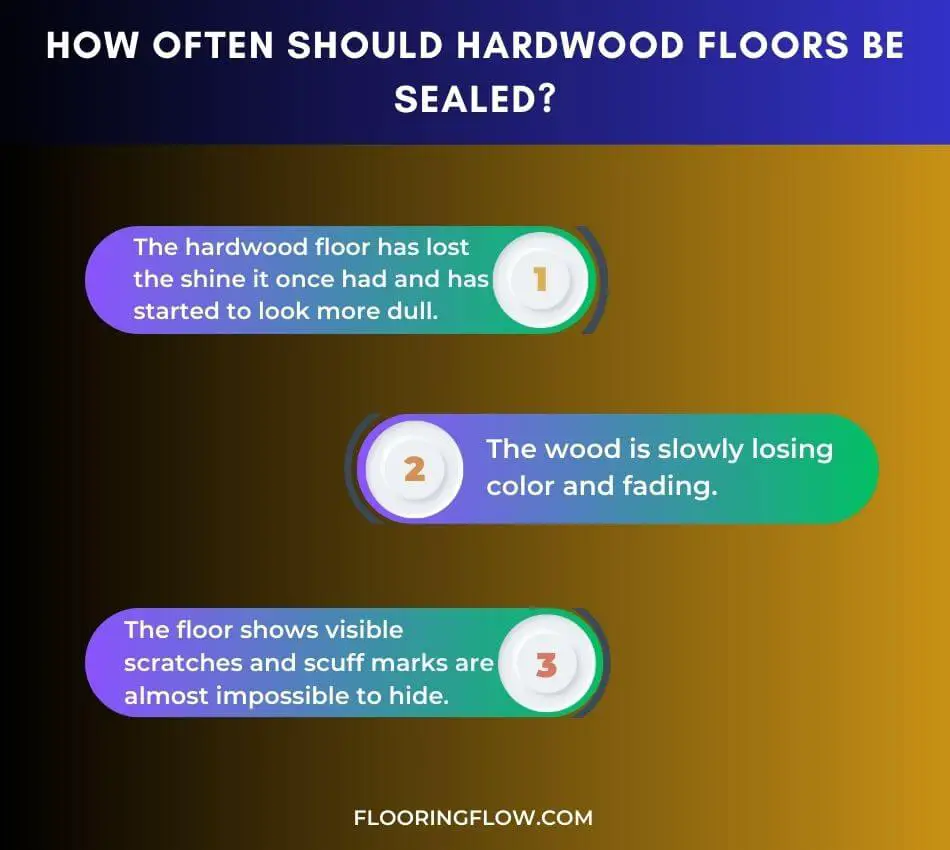
However, there are many factors that contribute to the time required before another finishing process.
It is likely that you aren’t able to determine whether your hardwood floors require another polyurethane treatment or not. Hence, here are some pointers that you must look for:
- The hardwood floor has lost the shine it once had and has started to look more dull.
- The wood is slowly losing color and fading.
- The floor shows visible scratches and scuff marks are almost impossible to hide.
If you start to see these factors and can observe them on your hardwood floors, it is high time you get them refinished with polyurethane.
The most plausible reason for these factors to appear is that your sealant has worn out and needs to be redone.
Once it has been applied again, your floors will slowly regain their lost shine and color and, in a matter of time, will look as good as new again.
How Do I Know If My Hardwood Floors Are Sealed?
Testing the surface for a sealant is possible through mineral spirits which can easily let you know if there is a sealant on the floor.
You must find a spot on the floor receiving low traffic and pour some mineral spirits into the area.
If you are wondering what mineral spirits are, they are petroleum-derived clear liquid solvents. It is not a rare or unique product; you can easily find it in your area’s regular home improvement store.
Once you have poured the liquid, make sure to let it stay on the surface for a few minutes so it can react and give you the results.
After that, you must wipe the surface with a clean or wipe cloth. If the wipes are clean, there is a high chance that your floors are finished with polyurethane, but if there is a brown or shiny residue, you must know that your floors are wax coated.
However, if the hardwood floor underneath changes color due to the wetness of the wipe and the color of the wood darkens, you must understand that the hardwood floors have not been sealed.
What Is The Difference Between Sealed And Non-Sealed Hardwood Floor?
A sealed hardwood floor is one on which a wax, polyurethane, or any other type of sealing substance is coated for its protection.
However, a non-sealed wooden floor refers to a plain wood surface with no coating on top for appearance or protection.
Sealed floors are usually glossier than usual or feature a matte finish whereas non-sealed floors look a bit blander in comparison.
Final Thoughts
Hardwood floors should be sealed under all circumstances to give them the optimum protection they deserve.
Not doing so can expose them to various types of risks and hence result in their life being decreased by many years. You will only be wasting your investment if you do not seal your hardwood floors on time.
Besides, if you have prefinished floors and want to seal them still, it is a very good decision as the factory coats are seen to be not as tough as the ones you would put on the surface separately.
Besides, it is also crucial to sand the floors before sealing them, while staining is a suitable option.
If you also have hardwood floors installed in your house, whether old or new, seal them on time and give them the right treatment to preserve them in the best condition.

As a co-creator of FlooringFlow.com, Emma Sophia comes on board to answer all your questions related to any flooring problems. Together with John Henry, she’s gained extensive experience in fixing many flooring problems in their own house as well as in friends and family’s. Now, she wants to share her knowledge that she gained during floor remodeling, restoring, and DIY projects.


